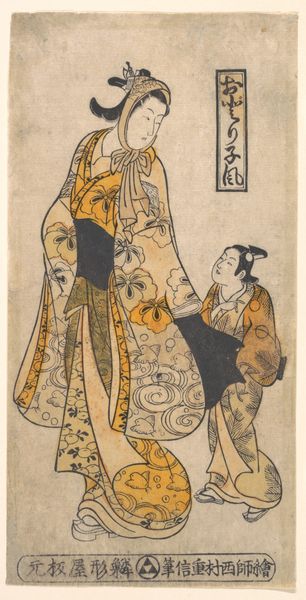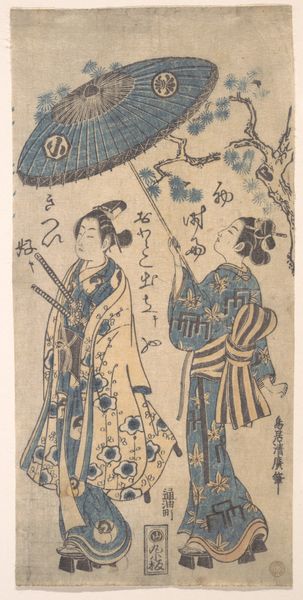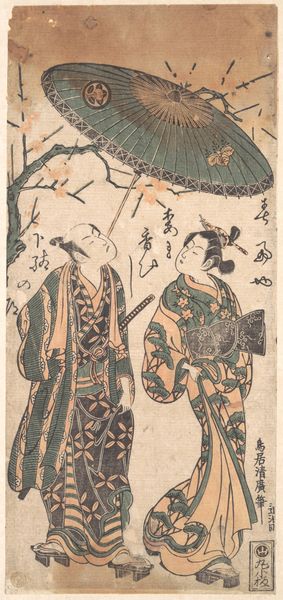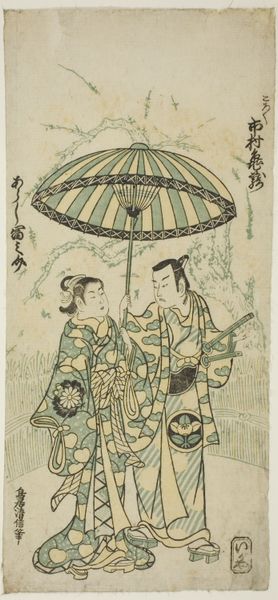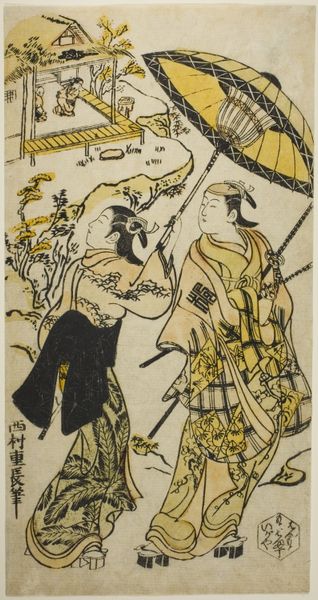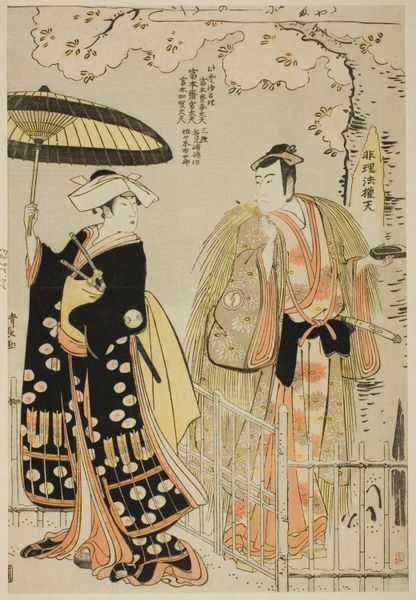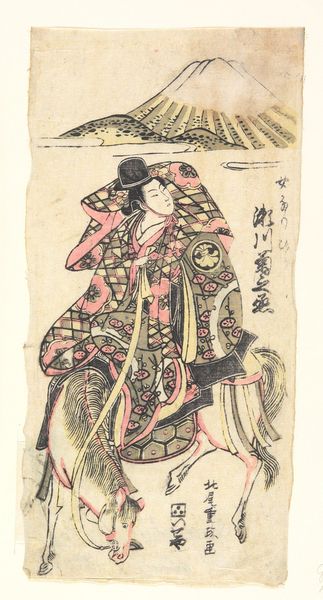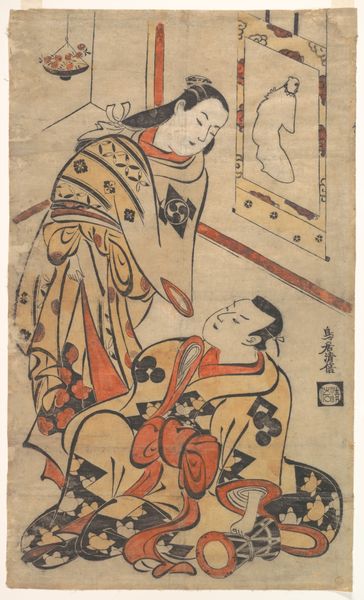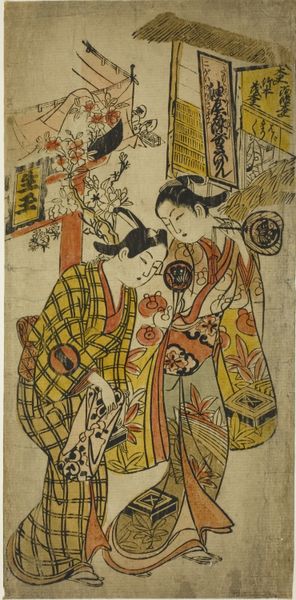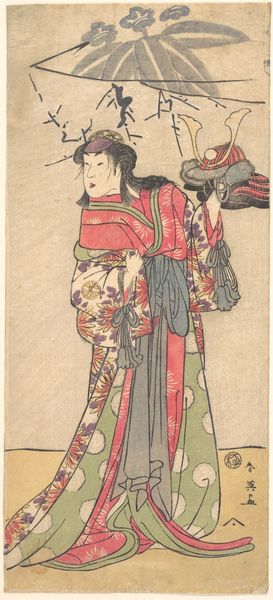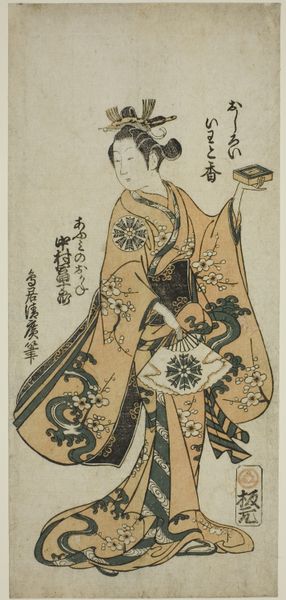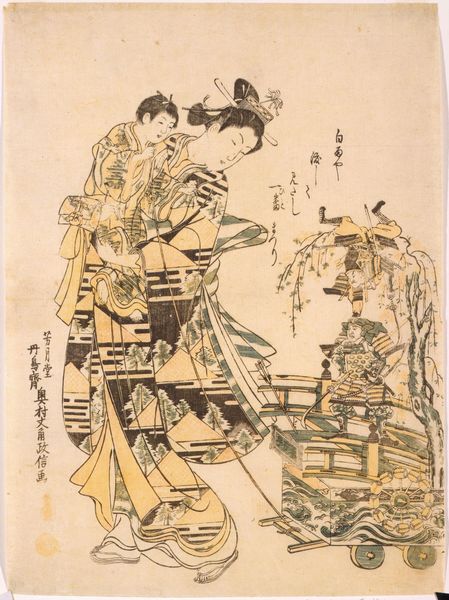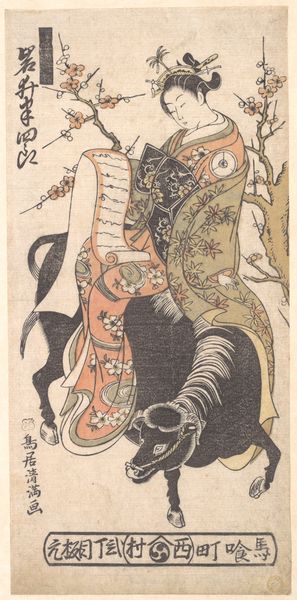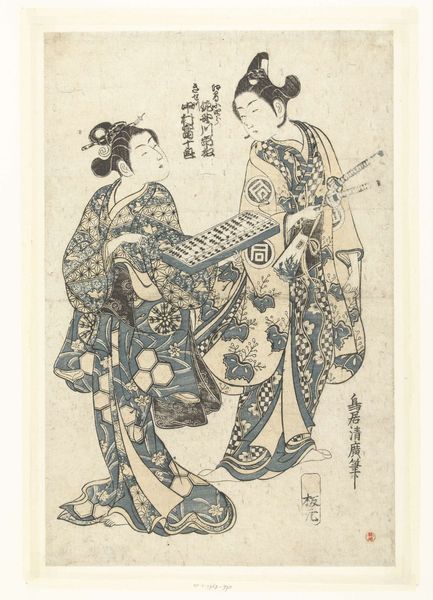
The Actors Sanogawa Ichimatsu I as Senjiro disguised as Kichisaburo and Nakamura Tomijuro I as Oshichi in the joruri "Midaregami Yoru no Amigasa," performed at the Nakamura Theater in the first month, 1742 1742
0:00
0:00
print, woodblock-print, woodcut
#
portrait
#
narrative-art
# print
#
asian-art
#
ukiyo-e
#
japan
#
figuration
#
woodblock-print
#
woodcut
Dimensions: 11 3/4 × 5 3/4 in.
Copyright: Public Domain
Curator: This 1742 woodblock print, held here at The Art Institute of Chicago, depicts "The Actors Sanogawa Ichimatsu I as Senjiro disguised as Kichisaburo and Nakamura Tomijuro I as Oshichi," a rendering of a joruri performance, "Midaregami Yoru no Amigasa." It’s the work of Torii Kiyomasu II. Editor: I'm immediately struck by the economy of the linework and color. There's such a striking visual narrative conveyed with such minimal means. It’s beautiful, but also quite formal. Curator: Formal yes, but it reflects a highly structured social dynamic. Consider the symbolism. The flowering plum branch is culturally significant in Japan. It heralds the arrival of spring. Notice how its placement acts almost like a stage-setting, and draws attention to the actors' elaborate costumes, rich with symbolic motifs. The crests indicate lineage and affiliation, almost as statements of identity within a strict societal structure. Editor: The gender performance aspect also really jumps out. The male actor playing a female role, heightens our understanding of gender fluidity in artistic representation, it breaks down binary ideas in the present, too. Who gets to embody whom on stage? How are women portrayed in art made predominantly by men? It feels rich for critical reading. Curator: Absolutely. And looking at it psychologically, we see a conscious creation of roles that transcend simple depiction. There’s something intrinsically powerful in recognizing universal stories presented through culturally specific visual codes. Ukiyo-e prints were often a sort of promotional material for the Kabuki theatre; celebrity portraits meant to fuel audiences and enthusiasm for performances. Editor: It definitely reads as early advertisement culture through portraiture. I am so taken by this period of art; you see this interplay of representation of lived experience that is being commercialized, not dissimilar from celebrity portraiture today. Who is memorialized through art really shows their significance in culture and society, a dynamic that can often erase less privileged populations. Curator: It’s true; each line, each carefully chosen color acts like a symbolic trigger, accessing deep wells of cultural memory and reinforcing shared narratives within society. Editor: A powerful mirror reflecting the society from which it springs, indeed. Curator: One that compels us to interrogate how such historical representations still resonate today.
Comments
No comments
Be the first to comment and join the conversation on the ultimate creative platform.
